
English
- inquiry@farmershrine.com
- Free Delivery for all Order of $1000

Saffron comes from a flower called Crocus sativus, commonly known as the saffron crocus. This beautiful purple flower produces bright red threads, or stigmas, which are used to make this luxurious spice. Over the last couple of years, my friend Hannah Milman has planted more than 10,000 saffron corms in various areas of the property, including a large patch beneath the quince trees just outside my flower-cutting garden. Saffron is typically planted in late summer and harvested by hand from late October to early November. It's incredibly rewarding to watch these flowers develop.
Enjoy these photos and learn about how to grow and harvest the most expensive spice in the world.
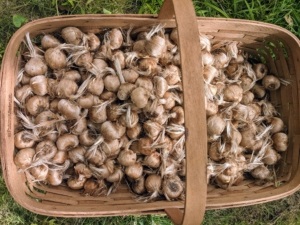
1. Hannah began planting saffron on her farm in 2020. She brought boxes filled with beautiful saffron corms. Saffron is a highly prized spice used in both sweet and savory dishes, most notably in Italian risotto, Spanish paella, and numerous Iranian and Asian recipes.
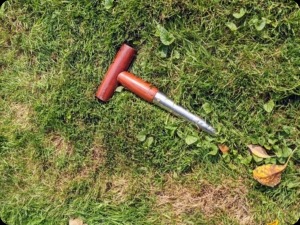
2. Saffron is planted in late summer; the main tool for planting saffron corms or small bulbs is a dibber, which is a pointed wooden stick used for making holes in the ground.
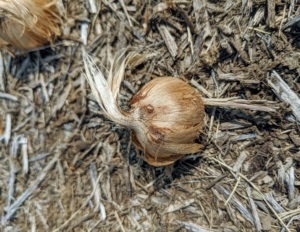
3. Here’s a closer look at one of the corms. The compact corms are small, brown globules that can be up to two inches in diameter. They have a flat base and are covered in a dense mat of parallel fibers known as the “corm tunic.”
Do you know the difference between a corm and a bulb? Both corms and bulbs are plant structures that store food to help plants grow and bloom. A bulb is an underground structure made up of a stem and layers of leaves, with a tiny version of the flower at its center. Some examples of bulbs include tulips, lilies, irises, daffodils, and onions. In contrast, a corm is a solid underground stem that serves as the base for the flower stem. Unlike bulbs, corms are not layered.
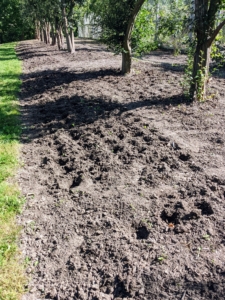
4. The largest bed of saffron is located beneath the quince trees next to my blueberry patch. This area is ideal for planting saffron, which thrives in hardiness zones 5 to 8 and requires full to partial sun. The garden receives at least five to six hours of direct sunlight each day. Here, Hannah begins to create holes for the corms.
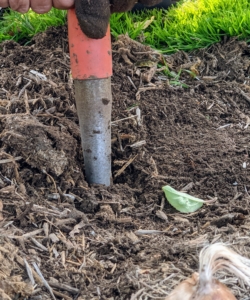
5. Hannah uses a dibber to create a hole that is at least four to six inches deep.
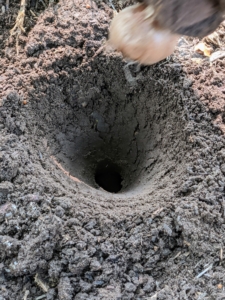
6. Generally, holes should be three times deeper than the corm or bulb's length. For planting smaller corms like these, a dibber is the ideal tool—fast and efficient.
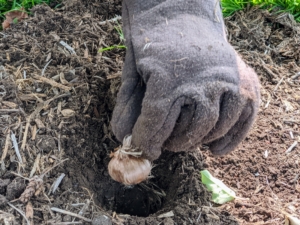
7. Each corm is carefully placed in a hole, with the pointed end facing up and the root end facing down. This positioning is crucial for the plant to grow properly. When purchasing bulbs and corms, always choose those that are plump and firm, and avoid any that feel soft.
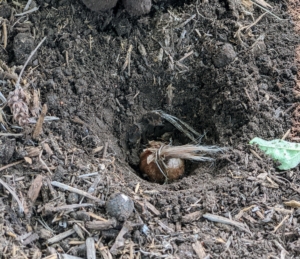
8. Here is the saffron corm just at the top of the hole before it is pushed in more deeply. See how it is facing up.
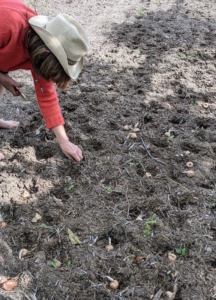
9. To efficiently plant all the corms, Hannah uses a production line method by first creating rows of holes and then placing the corms into them.
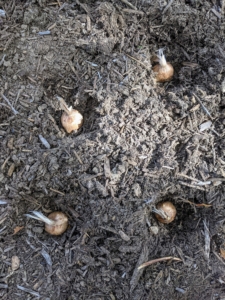
10. Hannah waits until all the holes are filled before covering them with soil to keep track of what has been planted where.
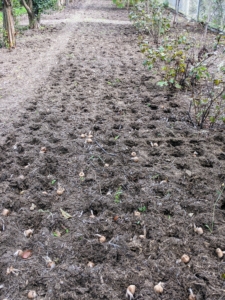
11. Here are all the rows of holes filled with beautiful saffron corms.
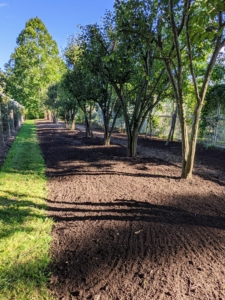
12. Here is the field after being backfilled and covered with nutrient-rich compost from the farm.
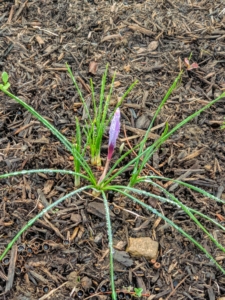
13. By early October, saffron sprouts become visible, appearing with thin, straight, blade-like green leaves that expand after the flowers bloom. One can also see the small flowers emerging from the center.
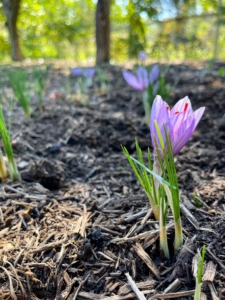
14. The lilac-colored flowers appear next, lasting for about three weeks.
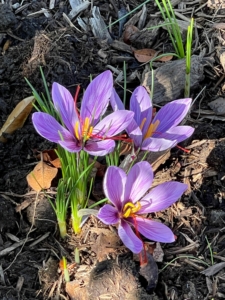
15. By mid-October, the majority of saffron blooms are open across the field.
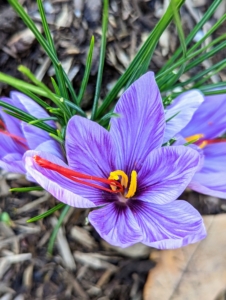
16. Saffron is made from the bright red-orange threads known as stigmas, which are the female parts of saffron crocus flowers. Each cup-shaped bloom contains three stigmas in its center. The optimal time to harvest the stigmas is mid-morning on a sunny day, when the flowers have fully opened and remain fresh. This is when the stigmas are ready to be collected.
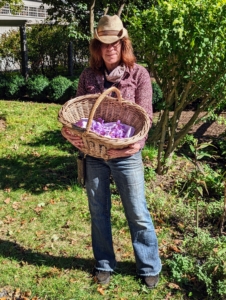
17. On harvesting day, Hannah carefully plucks the blooms and places them gently into a basket, enjoying their wonderful, sweet, honey-like fragrance. The leaves of the saffron plant will last for eight to twelve weeks before withering and disappearing, leaving no trace of the corms below until the flowers reappear next fall.
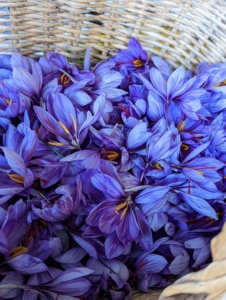
18. There is a stunning abundance of beautiful saffron flowers, which can be used in various ways.
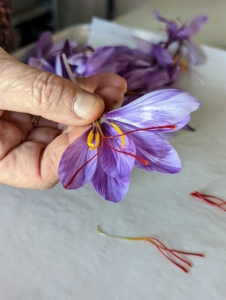
19. It takes hundreds of flowers to produce a commercially viable amount of this spice, along with considerable labor, which explains why saffron has long been the most expensive spice in the world by weight.
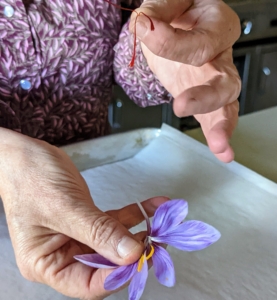
20. Hannah carefully pulls off the saffron stigmas, separating them from the flowers and placing them on a paper-lined baking sheet to dry.
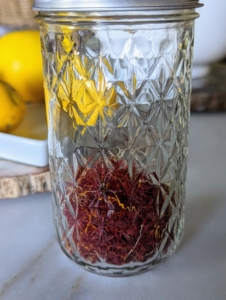
21. Once dried, saffron can be stored in a jar. I'm excited to use it in my cooking! You can visit our website @farmershrine.com to purchase saffron corms or the flowers directly from suppliers.